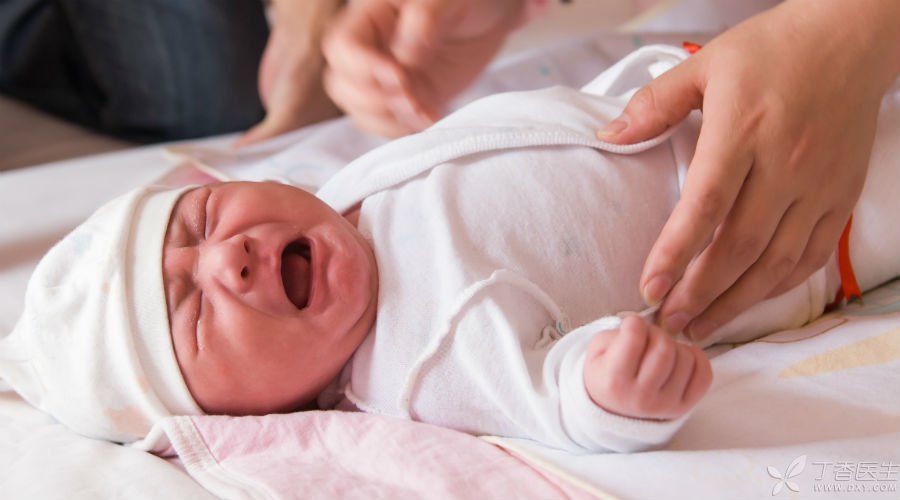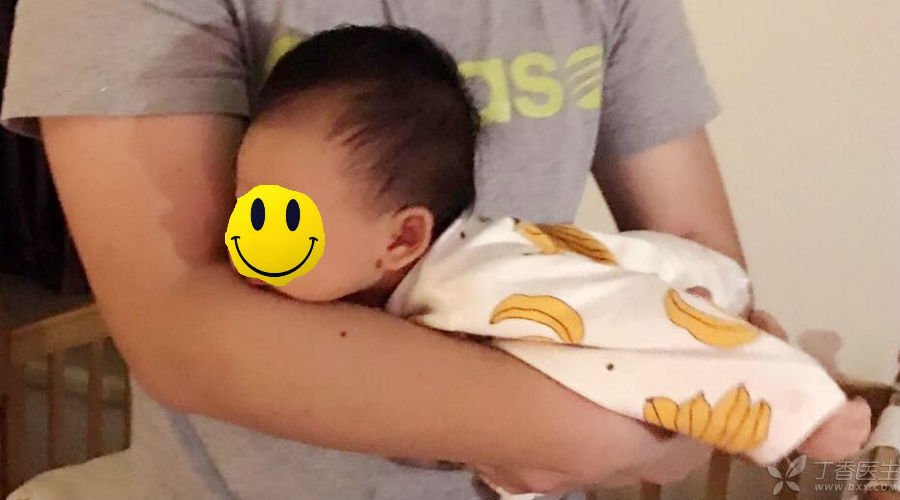
Our persistence in counting the days has finally come to an end-we are going to have a confinement.
Who can understand my mood at this time? Only those who have experienced it!
With this pride and arrogance, I took my mother and daughter to eat steak and improve the food in the charming sunset.
However, in the evening, before the beef in my stomach was digested, the baby resounded through the sky and carried out crying all night, beating me back to my original shape…
All the methods are used up, baby still cries.
This is the first night of the moon.
I thought the child would milk once or twice at night and sleep until dawn as usual, but after I took good care of my mother and the child and fell asleep, as soon as I lay down, the child suddenly woke up from his sleep and began to cry without any transition.
This really startled me.
At first, I was calm and had three routine tests:
-
The temperature is cold and hot;
-
Diapers;
-
Breastfeeding.
Originally, I believed that as long as the child was fed, the child would not cry. But strangely, this time feeding was useless.
The little tomato did not lie peacefully in my arms like a little angel sucking milk, but like a small fish leaving the water, struggling in my arms.
I panicked a little, pacifying my pacifier, listening to the underwater sound that little tomatoes like very much, walking around with my arms in my arms, and even risking waking my mother (my mother is very tired of nursing during the day, I insist that my mother sleep and I take care of it at night), and playing rap music loudly to my children…
Take a look at the wall clock, 2 o’clock in the morning. Put the camera outside the window in the silent night. Can you imagine this insane picture?
I tried my best to appease, and the child was also trying his best to wriggle and cry in pain in my arms.
Fortunately, in the middle of the night, the child gradually went to sleep slowly. I relaxed and fell asleep despondently. I lay down and swore: This matter must not come out. I am a super dad…
Consult a pediatrician, turned out to be flatulence!
The next morning, I couldn’t help thinking.
The more I think about it, the more wrong I am, so I took the little tomato with my mother to the maternal and child health care hospital to consult the pediatrician. After doing the examination and excluding the possibility of other diseases of the child, the doctor judged that the cause of the little tomato crying may be flatulence.
Tip: What are the common reasons for babies crying in the middle of the night?
Other gastrointestinal diseases;
Temperature problem, too hot, or too cold;
Rickets;
Enterobiasis;
No disease, just frightened during the day;
Infant flatulence.
Therefore, before judging that the child is flatulent, it is necessary to rule out other possibilities before dealing with the specific situation of the child. This process, it is best to go to the hospital to find a specialist in time, because it involves too much professional knowledge.
Is baby flatulence a what ghost?
The doctor told me that children usually begin to suffer from serious flatulence about one month after birth, usually after two months it will ease, and in rare cases it will continue until four months later. This is a very normal natural phenomenon.
It is said that few children will get away with this kind of growing pains. Usually, colic caused by flatulence is the direct cause of the baby crying suddenly and loudly in the middle of the night without any warning.
In addition, flatulence usually occurs in the first half of the night or after the middle of the night, but is unlikely to last throughout the night.
Looking back on the performance of the little tomatoes the night before, one by one, they were all right.
I quickly asked what to do next time I met this situation. The doctor’s story made me learn another routine attempt after the baby cried: the plane hug.
Holding the child like this can relieve intestinal flatulence.
Aircraft hugging can effectively help the baby to expel gas from the intestines and stomach, thus quickly freeing the baby from pain-of course, only colic caused by flatulence.
This trick really works. Tomatoes were still crying bitterly before. After holding the plane for one minute, they can feel comfortable until their eyes are dull ~
Personal experience, the most labor-saving airplane holding method:
-
One hand (hand A) passes through the middle of the baby’s legs, and the palm gently holds the stomach below the baby’s ribs.
-
The other hand (hand B) passes through the baby’s outer armpit and puts up the outer arm at the same time to reduce the pressure on the baby’s neck support.
-
The palm of hand B covers the waist and buttocks. When comforting, pat it gently.
It is too difficult to describe clearly with words alone, or look at the following figure.
 The original picture was provided by the author.
The original picture was provided by the author.
Attention should be paid during the process:
-
Pay attention to wiping the saliva from the baby in time.
I don’t know if all the babies will drool when they are held on the plane, but the drool of this one in my family can definitely flow into a river…
- Shaking the baby is not an appropriate way to appease the baby. When the baby cries, we may instinctively shake the baby back and forth gently. But this will increase the probability of air entering the baby’s intestines and stomach, Not conducive to relief of flatulence. So there is no need to shake, Just pat the child’s little ass regularly and firmly with your arm. If you can’t help but still want to shake, adults themselves can slowly swing the upper body back and forth, left and right, or in circles, with the baby. At the same time, adults can use the repeated voice of “oh ~ oh ~ oh ~” or “silk ~ silk ~ silk ~” in the baby’s ear to appease the child to stop crying as soon as possible.
-
You can change your posture by crying again.
When the baby cries again after holding the plane comfortably for a while, he can adjust to the normal posture and try to coax him to sleep.
What if the plane is useless?
Flatulence not only requires the baby to expel the gas from the stomach, but also cannot burp. There may also be gas in the intestinal tract that makes the baby miserable, that is, he cannot fart.
My little tomatoes sometimes curl up together in pain, with their little feet tilted up hard and crying all the time. Then they may fart once in a while.
Before, I still thought it was incredible: how long would it take to fart? However, after careful observation, I felt something was wrong. I felt that there was a fart that could not be squeezed out and it was very painful.
We chose the knee top pressure method to help the baby fart:

-
You can let the baby lie flat, and adults gently hold the baby’s two calves with both hands to bend the baby’s knees.
-
Slowly push the baby’s legs so that the knees are brought together to resist the baby’s lower abdomen.
-
Slowly exert oneself (the strength cannot be too great, the baby’s internal organs are very fragile), and hold on for 1 or 2 seconds when reaching the maximum.
-
Straighten the baby’s legs and repeat several times.
Among them, it is very important to hold the knee against the abdomen and then stop for 1 or 2 seconds. Generally, when the knee stops for 1 or 2 seconds, the baby will fart. At first, the baby will look very uncomfortable, but when the fart is finished, the baby will feel happy.
In addition to knee pressure, parents can also help their babies rub their stomachs.
Before going to bed every day, Baoma will rub the small tomato’s belly with the root of her palm, press it gently, and then rotate slowly clockwise.
About 5 turns, the baby will poop out a few farts, and then a face of cool crooked.
Can flatulence be prevented?
If the baby is really flatulent, although it can be relieved by the above method, in order to ensure the sleep quality of my beloved wife, I always have to wake up in the middle of the night for a while.
If it can be prevented, it will be closer to reality when you sleep until dawn. Therefore, I learned another set of preventive measures from doctors.
1. When the mother feeds, pay attention to the feeding speed of the child.
My wife’s milk belongs to the [cow] type, and the baby will burst out when it is sucked, and the milk output speed is extremely fast. Therefore, at the beginning of each kiss feeding, the baby often chokes.
Sears Parenting Encyclopedia said that eating milk too fast may lead to flatulence-facts have also proved this point.
During that time, almost every time after kissing and feeding the baby, the baby would flatulence and spit milk frequently. Therefore, we made adjustments. Before each kissing and feeding, we first sucked some milk out of the swollen breast with a breast pump and then fed the baby.
In this way, the flatulence situation has really been relieved.
Step 2 Use an anti-flatulence bottle
Generally, bottles and pacifiers form bubbles in the milk while the baby sucks milk.
At this time, it is easy for the baby to suck bubbles and milk into the stomach together, and more bubbles may lead to flatulence.
However, anti-flatulence bottles or pacifiers usually have another air inlet to allow air to enter the bottles. The possibility of flatulence is greatly reduced when there are fewer or no bubbles.
3. The timing of hiccups after feeding is especially important.
Hiccup is a basic skill for children. There are not many specific methods here, but the timing of hiccup is very important.
When the little tomato was more than a month old, we found that we burped immediately after eating milk, which was very easy to spit milk, basically one at a time.
At the end of the day, we had reached the point where we were nervous. The baby belched and we all subconsciously put our hands on the paper towel box and stood by at any time.
So we tried to make adjustments again: after eating milk, we changed the previous process of burping immediately, but tilted at a certain angle (about 10 degrees) to let the baby lie flat in our arms and wait for about 10 minutes before burping.
This attempt has eased the situation of spitting milk.
4. Hiccups are especially important
At that time, my mother-in-law was impatient to watch the child spit milk and hiccupped the little tomato. A big five-finger mountain was slapped on the back for more than ten minutes.
In this way, the poor little tomato’s eyes were wide open and he was shaken his head. I felt carsick when I looked at it… so, in order to thank the grandmother for her meticulous care, I belched later…
The gesture of belching is very important. If you straighten out your fingers to pat the child on the back, not only will the child bear heavy force, but also if you exert too much force, it will easily affect the child’s internal organs.
It is better to put the five fingers together so that the palm is concave into a hollow structure, and beat the child’s back lightly and quickly from bottom to top. Or, it is OK to stroke the child’s back slowly from top to bottom, not necessarily belching.
Of course, there are also shaking methods, prone hiccups and other methods. However, these methods are too radical. Our little princess is sensitive and cannot be used. Try the above first. If you can’t do it yet, find Ding Ma. She must have another way.
Written at the end: the self-cultivation of a good father
Although baby flatulence is a common problem, new mothers may be frightened by their children’s loud crying without warning.
Moreover, flatulence mostly occurs at night, so if the mother does not know how to deal with it, she may feel very guilty, anxious and panicked, and if it is serious, she may suffer from milk reduction or even postpartum depression.
Therefore, at this time, if my father overcomes the tiredness of working during the day, actively cooperates with me, and thinks about the solution together with my mother, my mother will get the greatest comfort and thus feel more at ease.
At the same time, the father’s participation can also enable the mother to have a better rest at night, preserve her physical strength and ensure sufficient milk to ensure the nutrition of the child.
